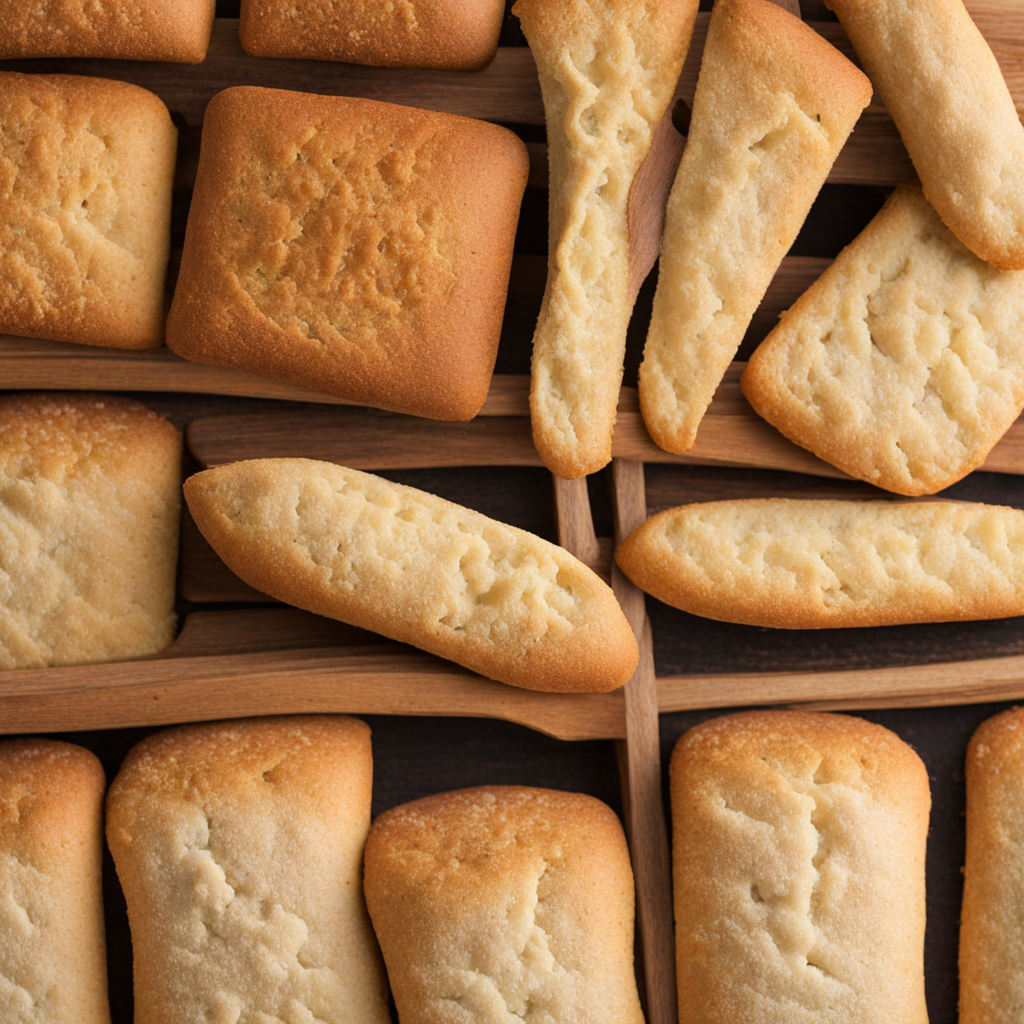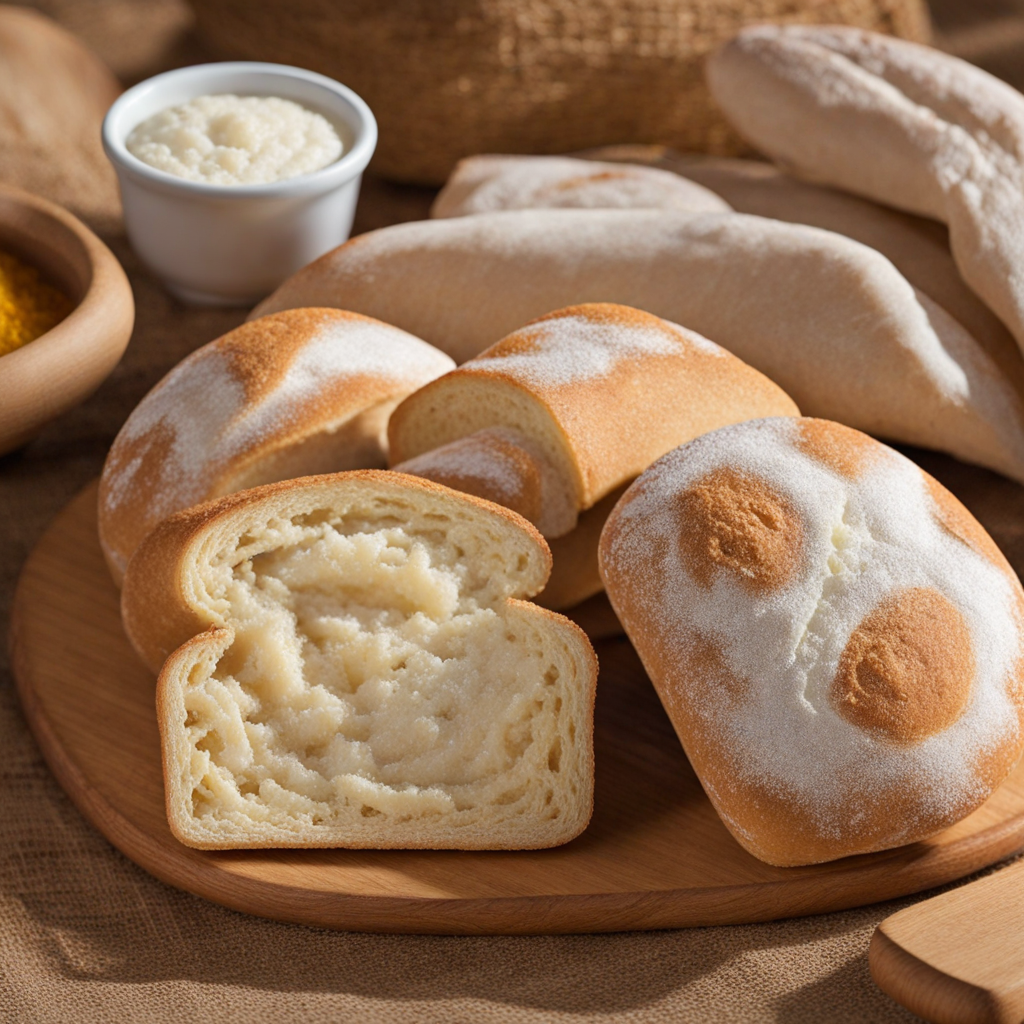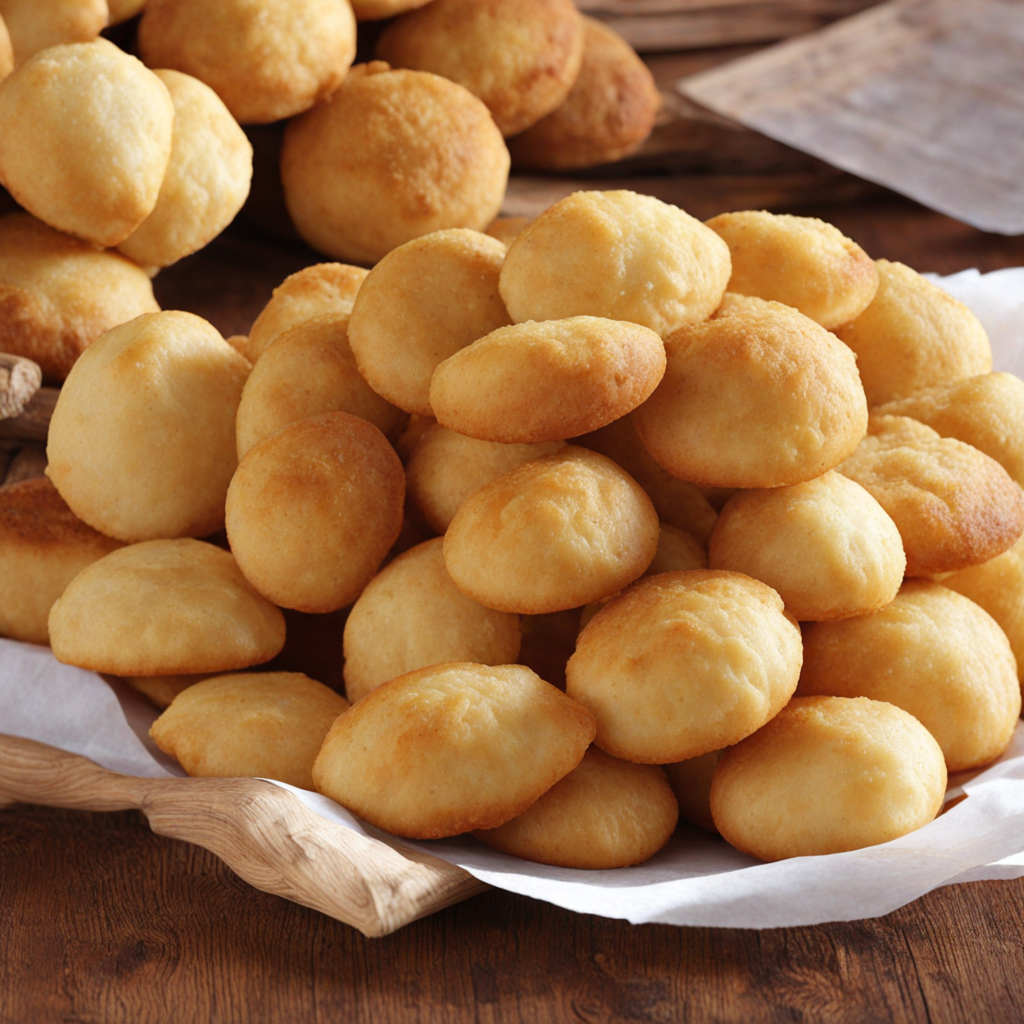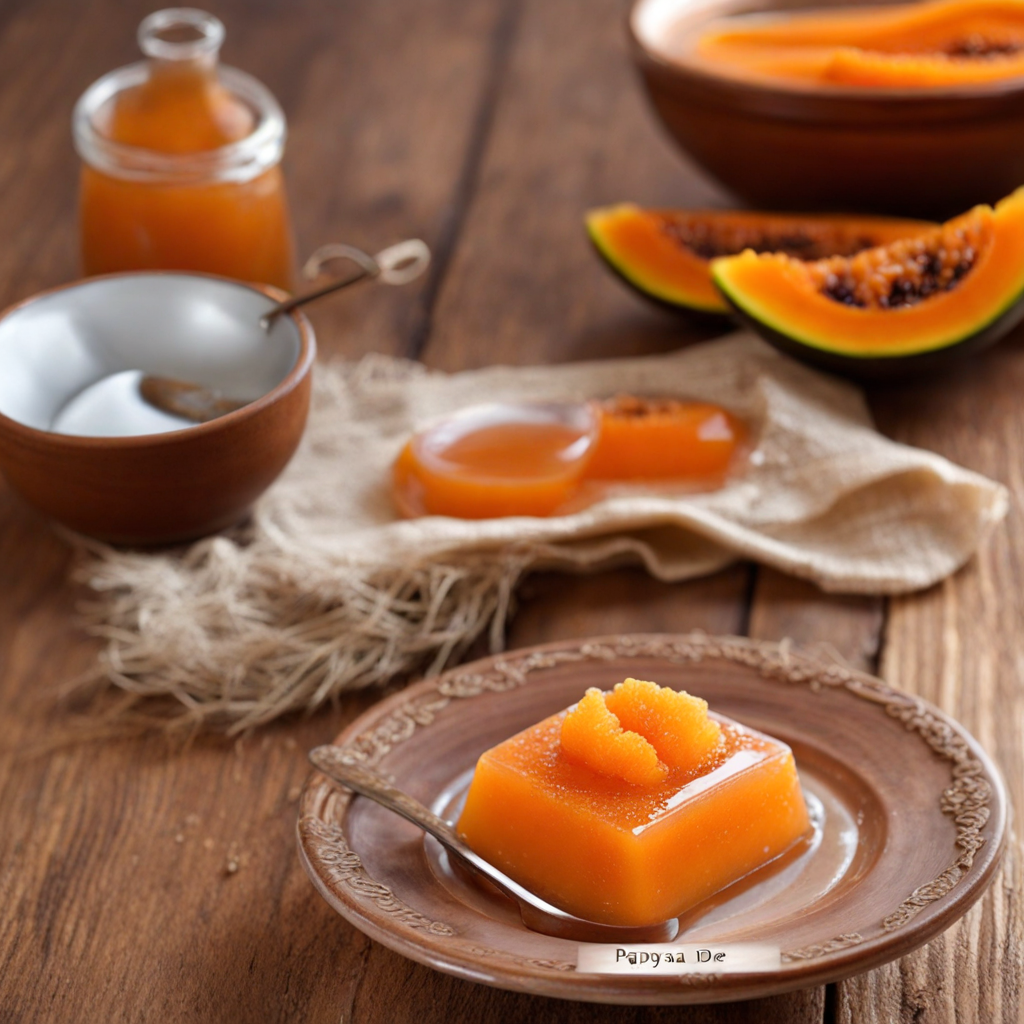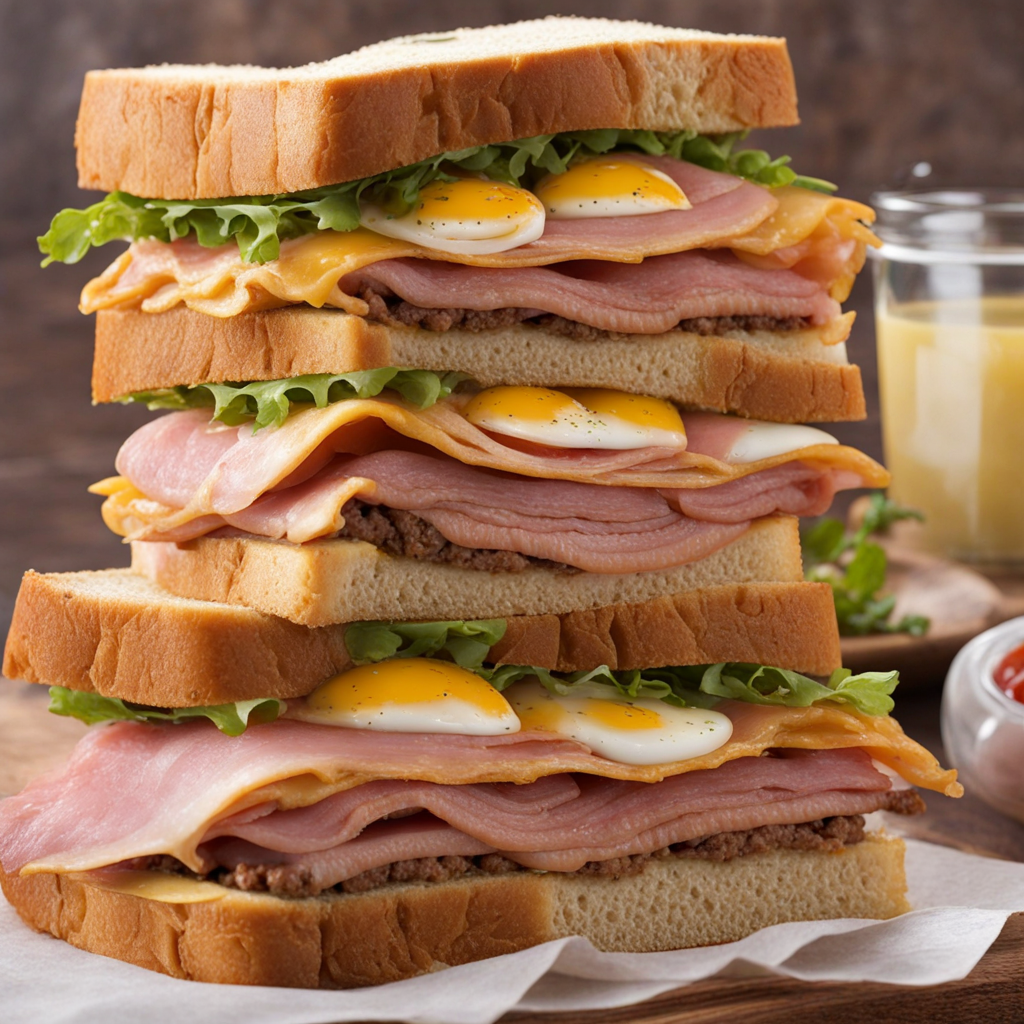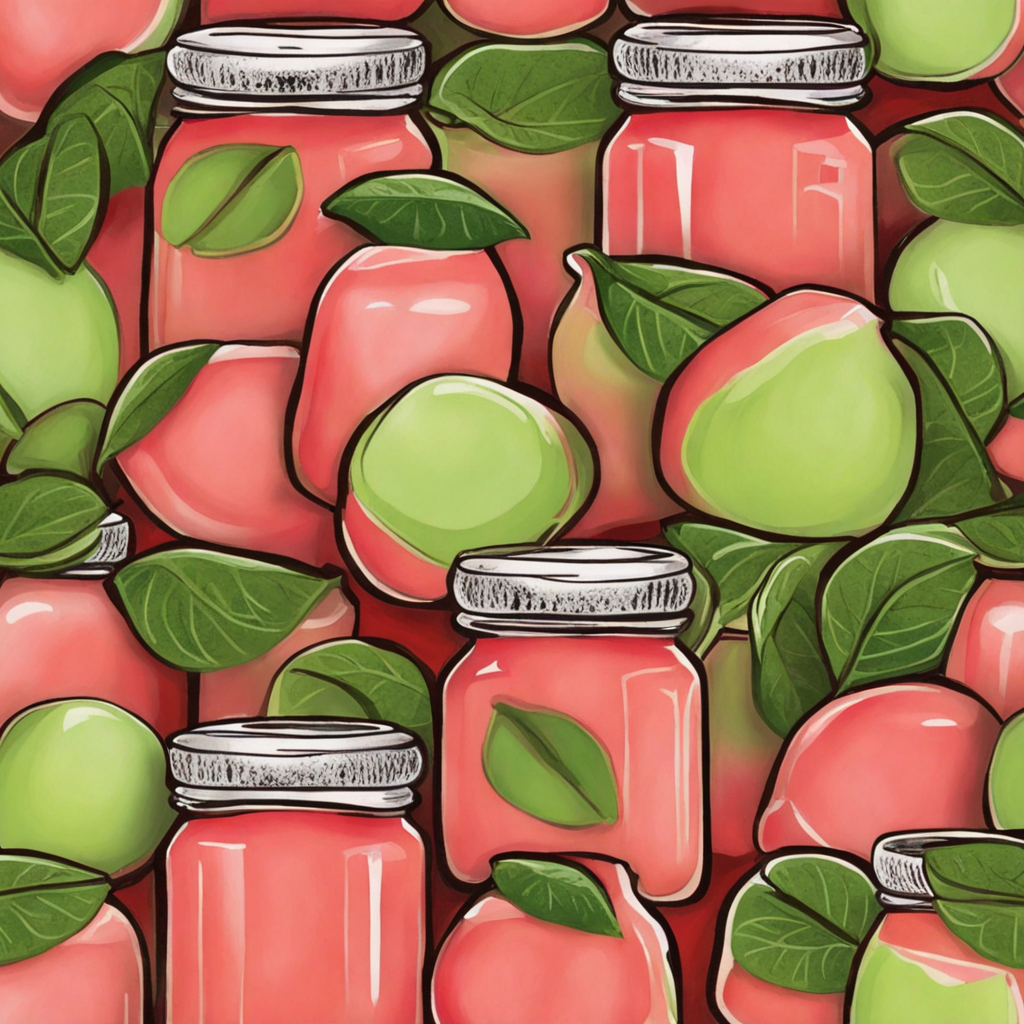Manioc Bread
Manioc Bread, known locally as "Chipá," is a delightful traditional food from Paraguay that showcases the unique flavors of the region. Made primarily from manioc flour, which is derived from the cassava root, this bread has a distinct texture that is both chewy and slightly crumbly. The dough is often mixed with cheese, eggs, and milk, creating a rich and savory flavor profile that is both comforting and satisfying. The use of fresh, local ingredients contributes to the authenticity of this dish, making it a staple in Paraguayan households. The preparation of Manioc Bread is relatively simple yet requires a careful balance of ingredients. The manioc flour is combined with grated cheese, which can vary from a mild to a sharper variety, depending on personal preference. Once the dough is formed, it is shaped into small rounds or patties and baked until golden brown. The result is a bread that is crispy on the outside and wonderfully soft on the inside, making it perfect for enjoying on its own or as a side dish to complement hearty meals. What sets Manioc Bread apart is its versatility and the comforting memories it evokes for many Paraguayans. It can be enjoyed at any time of day, whether as a breakfast treat, a snack with tea, or as part of a festive meal. Moreover, it is often served with a variety of accompaniments, such as butter or jam, enhancing its flavor even further. Discovering Manioc Bread is not just about tasting a new food; it’s an invitation to experience the heart of Paraguayan culture and the warmth of its culinary traditions.
How It Became This Dish
The History of Pan de Mandioca: A Taste of Paraguay Pan de Mandioca, or cassava bread, is a traditional Paraguayan dish that encapsulates the rich cultural and historical tapestry of Paraguay. Made primarily from cassava flour, this gluten-free bread has deep roots in the indigenous cultures of the region and has evolved over centuries to become a staple in Paraguayan cuisine. Its history is not just about food; it is intertwined with the identity of the people and their relationship with the land. #### Origins: The Roots of Cassava The story of Pan de Mandioca begins with cassava, a tuber native to South America, which has been cultivated for thousands of years. Its origins can be traced back to the indigenous peoples of the Amazon basin, where it was first domesticated. The Guarani, the prominent indigenous group in Paraguay, were among the first to adopt cassava as a staple food. They recognized its nutritional benefits and versatility, using it in various forms. Cassava, known as "mandioca" in Guarani, played a crucial role in the diet of the Guarani. They developed techniques for processing the tuber, which is toxic in its raw state due to the presence of cyanogenic glycosides. Through methods such as soaking, grating, and fermenting, the Guarani were able to create safe and nourishing food sources. The preparation of cassava was not just a practical necessity; it was also deeply embedded in cultural rituals and communal life. #### Cultural Significance: A Symbol of Sustenance As Paraguay evolved through the colonial period and beyond, Pan de Mandioca took on greater significance as a symbol of sustenance and identity. The Spanish colonization in the 16th century introduced new ingredients and food customs, yet cassava remained a constant in the local diet. The fusion of indigenous and European culinary practices led to the creation of new dishes, but Pan de Mandioca held its ground as a beloved traditional food. In Paraguay, Pan de Mandioca is more than just a carbohydrate source; it embodies the spirit of resilience and adaptability of the Paraguayan people. The bread is often enjoyed with a variety of accompaniments, such as cheese, meat, or as a side for stews. It is commonly served during celebrations and gatherings, reinforcing its role as a communal food that brings people together. The act of sharing Pan de Mandioca reflects the warmth and hospitality of Paraguayan culture. #### Development Over Time: From Tradition to Modernity Throughout the 19th and 20th centuries, Paraguay underwent significant political and social changes, including the devastating War of the Triple Alliance (1864-1870). This conflict had a profound impact on the nation, leading to a drastic reduction in population and altering traditional lifestyles. Yet, amidst the turmoil, Pan de Mandioca remained a staple, symbolizing the enduring spirit of the Paraguayan people. In the decades that followed, the preparation and consumption of Pan de Mandioca began to evolve. Urbanization and modernization introduced new culinary techniques and influences. While many traditional recipes remained intact, innovations emerged as families experimented with flavors and textures. Today, Pan de Mandioca can be found in various forms, from the traditional flatbread to more elaborate versions filled with cheese or herbs. The globalization of food culture in the late 20th and early 21st centuries also contributed to the evolution of Pan de Mandioca. As Paraguayans migrated abroad, they brought their culinary traditions with them, leading to a greater appreciation and awareness of Paraguayan cuisine on the global stage. Restaurants and food festivals celebrating Paraguayan food, including Pan de Mandioca, have emerged in various countries, showcasing the dish to a broader audience. #### The Modern Palate: A Culinary Revival In recent years, there has been a renewed interest in traditional foods and culinary heritage, particularly among younger generations in Paraguay. With a growing focus on local and sustainable ingredients, Pan de Mandioca has found its place in contemporary cuisine. Chefs are experimenting with the dish, incorporating artisanal techniques and local flavors, while still honoring its historical roots. Moreover, the gluten-free trend has contributed to the resurgence of Pan de Mandioca. As more people seek alternatives to wheat-based products, cassava flour has gained popularity not only in Paraguay but also internationally. This shift has allowed Pan de Mandioca to transcend its traditional boundaries, appealing to a diverse audience who appreciate its unique flavor and texture. #### Conclusion: A Living Tradition Pan de Mandioca is more than just a bread; it is a testament to Paraguay’s rich history and cultural identity. From its origins with the Guarani to its place on modern dining tables, this dish has survived the test of time, adapting to changing circumstances while retaining its essence. It is a symbol of sustenance, community, and resilience, encapsulating the heart of Paraguayan life. As Paraguay continues to evolve, so too will Pan de Mandioca. It serves as a reminder of the importance of preserving culinary traditions while embracing innovation. Whether enjoyed at a family gathering, a festive celebration, or a contemporary restaurant, Pan de Mandioca remains a beloved dish that connects generations and celebrates the rich tapestry of Paraguayan culture.
You may like
Discover local flavors from Paraguay


